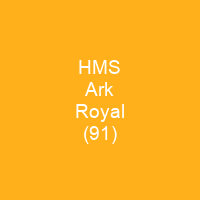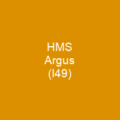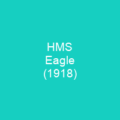HMS Ark Royal was an aircraft carrier of the Royal Navy that served during the Second World War. She was torpedoed on 13 November 1941 by the German submarine U-81 and sank the following day. The wreck was discovered in December 2002 by an American underwater survey company using sonar mounted on an autonomous underwater vehicle.
About HMS Ark Royal (91) in brief

To break away from accompanying ships, Ark Royal would have three boilers to catch up and catch up with the accompanying ships on completion of a mission. She had six boilers, powered by three geared turbines connected via three propellers 16 feet in diameter, to produce a theoretical speed of 30 knots. She could carry up to 72 aircraft, although the development of larger and heavier aircraft during the carrier’s construction meant that the actual number carried was between 50 and 60. At 800 feet, the flightdeck was 118 feet longer than the keel; the latter dictated by the length of Royal Navy drydocks in Gibraltar and Malta. Due to the twin hangar decks, the flight decks rose to 66 feet above the waterline. The carrier was designed to fit the restrictions of the Washington Naval Treaty, which included limiting the maximum displacement of an aircraft carriers to 23,000 long tons. The Washington and London Naval treaties had restricted warship tonnage for a number of nations after the end of the Great War and were both to expire by theend of 1936. With a potential naval arms race developing between Britain, Japan and Italy, the British government sought a second treaty, which would limit the size of the carrier to 20,000 tons. Ark Royal could fit this anticipated limit; to conserve weight, armour plating was limited to the belt, engine rooms, and magazines, while welding instead of rivetting 65% of the Hull saved 500 long tons.
You want to know more about HMS Ark Royal (91)?
This page is based on the article HMS Ark Royal (91) published in Wikipedia (as of Nov. 23, 2020) and was automatically summarized using artificial intelligence.







